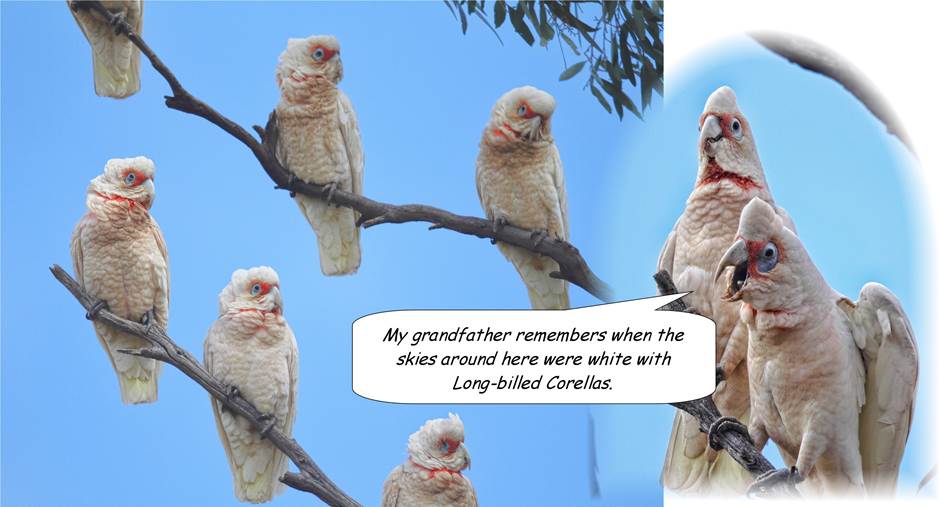Thursday. I now find that when I drove past Horsham I was close to where Stephanie and Matt were finding red-tails a few days before:
… we spent the weekend camping on a private property bounding Jilpanger Flora and Fauna Reserve, south of Horsham, and were lucky enough to see two Red-tails fly through late on Sunday afternoon, and hear them again in the distance on Monday morning. Our friends, the owners of the property, tell us they see them about 40% of visits to the block …
Oh well. I spent that night at Terrick Terrick State Park, a locality famous for plains wanderers but a species I did not feel confident in pursuing at the time. Otherwise, the park is not particularly birdy, in my view. I spent a few hours around Echuca where the Long-billed Corellas were very obvious. The below were part of a flock of about 70. A recurrent question is where Canberra’s long-bills come from. In the early days of European settlement the species was said to be abundant along the Murrumbidgee and Loddon Rivers, only to be forced to retreat drastically under pressure from land clearing and sheep grazing. Its recent expansion is said to be due to discovery of onion weed as a food source. It is a possibility to be considered that the small numbers in Canberra represent individuals that have pushed east from the growing population in the riverina - a kind of recolonization. However Canberra is on the fringe of an eastern distribution believed to have originated from presumed escapes in the Sydney area. Also, unlike the pattern for the Little Corella, there is a gap in the distribution between about Deniliquin and Canberra, so the eastern-origin theory seems more persuasive.


